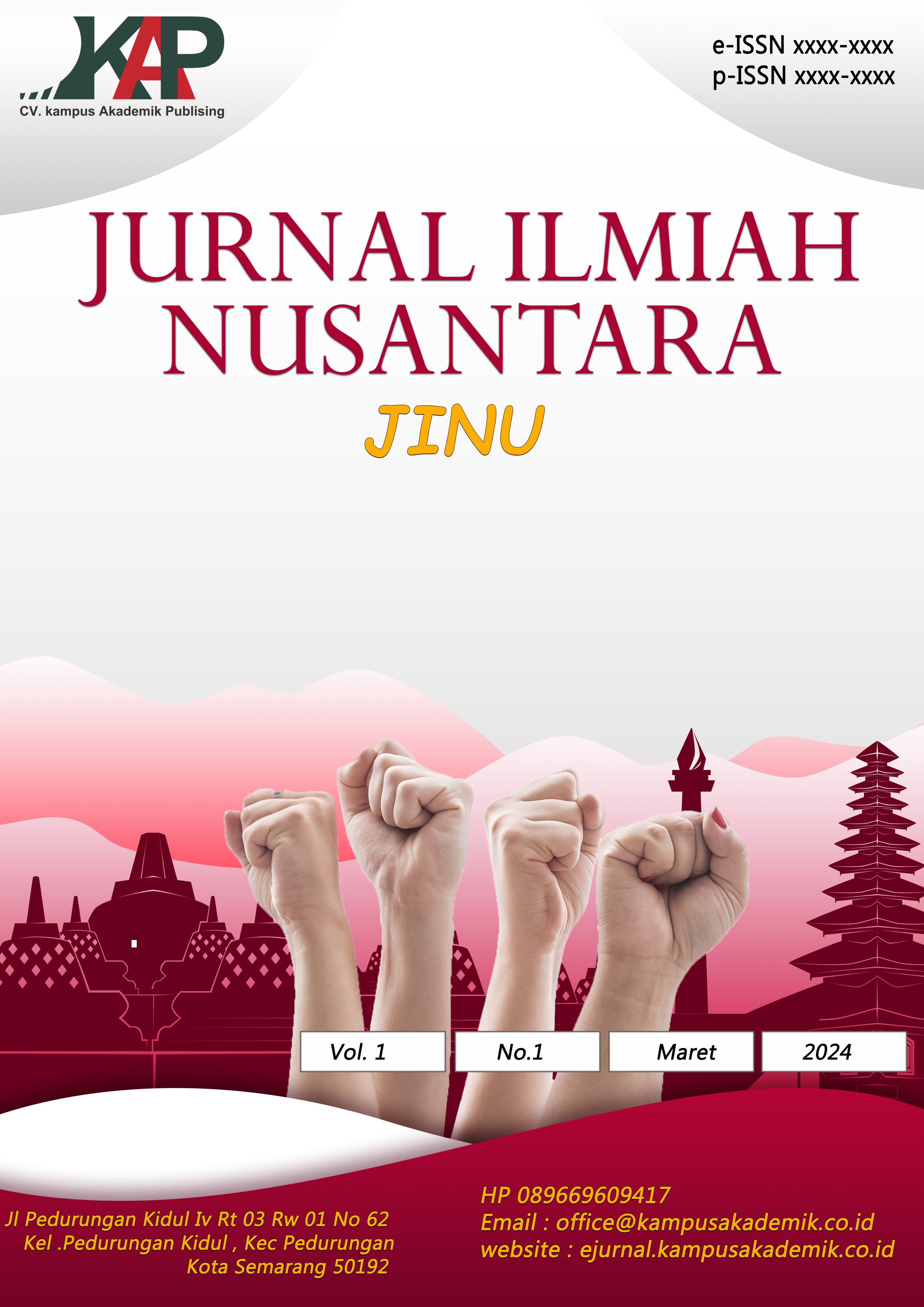Pemaknaan Bahasa dalam Konteks Komunikasi Antarbudaya: Sebuah Pendekatan Teoretis
DOI:
https://doi.org/10.61722/jinu.v2i4.4976Keywords:
intercultural communication, language, meaning, communication theory, cultural contextAbstract
In the era of globalization marked by high mobility and increasingly intense intercultural interactions, language plays a crucial role as a means of conveying messages and as a marker of cultural identity. This article aims to examine the meaning of language in the context of intercultural communication through a theoretical approach. By examining major theories such as linguistic relativity, intercultural communication competence, and cross-cultural communication models, this article highlights how differences in perception, symbols, and language structures affect the effectiveness of communication between individuals from different cultural backgrounds. This study also emphasizes the importance of cultural sensitivity and linguistic awareness in reducing miscommunication and increasing intercultural understanding. The results of the study indicate that the meaning of language is not only determined by linguistic structures alone, but also by the socio-cultural context in which the language is used. These findings provide theoretical contributions to the development of intercultural communication studies and become an important basis for inclusive and effective communication practices amidst global diversity.
References
Saifuddin, Achmad Fedyani. 2005. Antropologi Kontemporer. Kencana. Jakarta
Piliang,Yasir Amir. 2010. Semiotika dan Hipersemiotika. Matahari. Bandung.
Mufid, Muhammad. 2010. Etika dan Filsafat Komunikasi. Kencana. Jakarta
Nasrullah, Rulli. 2012. Komunikasi Antar Budaya di era Budaya Siber. Kencana.
A. Bandura dan R.E. Wood. 1982. Social Foundations of Thought and Action: A Social Cognitive Theory. Englewood Cliff s, NJ: PrenticeHall.
A. Hogg dan Grieve M. Vaughan. 2002. Social Psychology. 3rd Edition. London: Prentice Hall.
Alex H. Rumondor dkk. 2003. Komunikasi Antar Budaya. Jakarta: Pusat Penerbitan Universitas Terbuka.
Alo Liliweri. 2001. Gatra-gatra Komunikasi Antarbudaya. Yogyakarta: Pustaka Pelajar. Alo Liliweri. 2007. Makna Budaya dalam Komunikasi Antarbudaya. Edisi 4. Yogyakarta: LKIS.
Anak Agung Ngurah Adhiputra. 2013. Konseling Lintas Budaya. Edisi 1. Yogyakarta: Graha Ilmu.
Andrea L. Rich. 1974. Interracial Communication. New York: Harper dan Row.
Berger dan Chaff ee (Ed.). 1987. Handbook of Communication Science. Beverly Hills, Calivornia: Sage.
Burhan Bungin. 2008. Sosiologi Komunikasi: Teori, Paradigma, dan Diskursus Teknologi Komunikasi di Masyarakat. Jakarta: Kencana.
Calvin S. Hall dan Lindzey Gardner. 1993. Teori-teori Psikodinamik (Klinis). Terjemahan. Yogyakarta: Kanisius.
Carl I. Hovland. 1988. Komunikasi Politik (Konsep, Teori, dan Strategi). Jakarta: Gramedia.
Carl Rogers. 1961. On Becoming a Person: A Therapist‘s View of Psychotherapy. London: Consta.
Carley H. Dodd. 1982. Dynamics of Intercultural Communication. Dubuque: Wm C. Brown Company Publishers.
J. Arnold, C.L. Cooper, dan I.T. Robertson. 1998. Work Psychology: Understanding Human Behaviour in The Workplace. London: Financial Lan Robertson.
J. Ermer dan J.H.M. Miller. 2005. Method Validation in Pharmaceutical, Analysis A Guide to Best Practice. Weinheim: Wiley-VCH.
J.B. Wahyudi. 1991. Komunikasi Jurnalistik. Bandung: Alumni. Jalaluddin Rakhmat. 2005. Psikologi Komunikasi. Bandung: Remaja Rosdakarya.
Jesse G. Delia. 1987. Communication Research: A History. Sage Publication, California: Newburry.
John P. Simanjuntak et al. 2003. Public Relation. Yogyakarta: Graha Ilmu.
Joseph A. Devito. 1997. Komunikasi Antarmanusia. Kuliah Dasar. Jakarta: Professional Books.
Downloads
Published
Issue
Section
License
Copyright (c) 2025 JURNAL ILMIAH NUSANTARA

This work is licensed under a Creative Commons Attribution-ShareAlike 4.0 International License.













